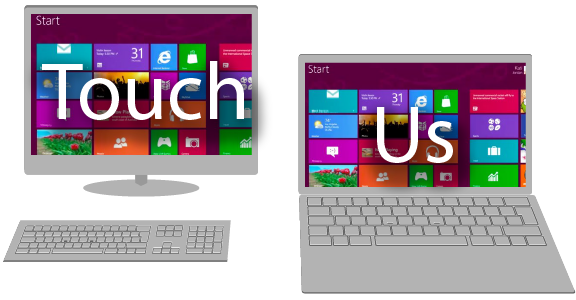On the desktop, and on notebooks, a touch screen interface has yet to really become a mainstream staple. There have definitely been attempts to bring touchscreen to desktop displays and all-in-ones in the past; HP’s TouchSmart series pre-dates Windows 8 by a considerable margin, for example. And yet it’s not the dominant model of computing by any means, especially outside of a mobile paradigm, and Windows 8 is unlikely to change that.
ASUS yesterday announced a new Windows 8-ready version of its ET2701 all-in-one PC, which is a version of its existing all-in-one offering with a new 10-point capacitive touch screen designed to make the most out of Microsoft’s new desktop operating system. The 10-point capacitive touchscreen is becoming a hallmark of Windows 8 hardware, as much as the Metro-style interface borrowed from Windows Phone. The same exact descriptor of a “10-point” capacitive screen appears in release PR today about Acer’s latest Aspire Ultrabook lineup, a Windows 8 marquee affair with some models that want you to take your tablet-tapping digits and roughly prod laptop screens ranging from 11.6 to 15.6-inches in size.
Windows 8 changes things, by making touch a central facet of a desktop OS, for the first time ever. If you’ve used Windows 8, on both tablets and desktops especially, you’ll notice that there’s a gap in user experience. For the first time, this is a Windows experience that feels like it’s asking for touch input, and that’s something manufacturers like HP and Asus are preparing for, with touch-supporting hardware coming out in machines where it once would’ve been considered an outlier solution aimed at a fringe group of users.
But will Windows 8’s touch features translate well to the desktop, even if the hardware continues to arrive to support it? There’s good reason to believe that touch and traditional desktop form factors are relatively incompatible. For instance, there’s effort expenditure required – using touch on the desktop requires a lot more work than using a keyboard and mouse or trackpad, especially when the screen’s at arm’s length. Imagine the slight movement of dropping your finger or thumb to the trackpad or moving one hand to the right to grab a mouse, and then compare that to the repeated act of reaching out to a screen, tapping and dragging, flicking up or down to scroll, or using multi-touch gestures instead of keystrokes to do things like zoom and rotate. It’s arguably more visceral and direct, but it’s also much more of an effort expenditure, and one that’s very unlikely to become habit-forming
Apple CEO Tim Cook provoked a number of headlines on an April earnings call when he said that laptop/tablet hybrids were essentially flawed Frankenstein monsters. “Anything can be forced to converge,” he said, but noted that doing so involves trade-offs, and when you make too many, no one’s pleased with the end result. Some products, like the Kupa UltraNote I tried out this week at MobileCon, seem to strike the right balance, but that’s a complete redesign, not sticking touch on an existing, traditional form factor.
Windows 8 has been called a “cognitive burden” or worse by some for desktop PC users, and Matt Burns noted yesterday that Microsoft itself seems keen on ignoring that aspect of the new OS. But for desktop and PC manufacturing partners, the end result looks like it might be an entire generation of computers with an identity crisis, and a large group of users left pawing at screens never meant for touch input in an unsatisfying manner before giving up and devising workarounds for a compromised user experience.
